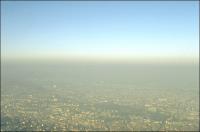 |
||
| Friday, 07/18/2025 | ||

| Current meteorological data | |
| Air temperature: | 66.38 (°F) |
| 19.1 (°C) | |
| Wind speed: | 3 (km/h) |
| Wind direction: | S, 186.5 ° |
| Global radiation: | -- (W/m²) |
| Act. UV-Index: | -- |
| Precipitation: | 0.0 (ltr/m²) |
| (Updated: 07/18/2025, 01:30, S-Mitte, Amt für Umweltschutz |
|
| More meteorological data | |
| More about weather Stuttgart |
|
| Current sun location |
|
| Webcams in Stuttgart |
|
Weather forecast Stuttgart  |
|
Weather forecast Europe  |
|
Weather radar Germany  |
|
| More links | |
| News and current events |
|
| Heat Action Plan of the State Capital Stuttgart 2025 | |
| Heat Action Plan Stuttgart 2025 | |
| Climate Change Adaptation Concept Stuttgart (KLIMAKS) | |
| (KLIMAKS) Progress Report 2025 | |
| Climate Center Stuttgart | |
| Climate Dashboard Stuttgart | |
| Summer Days and Hot Days in Stuttgart (until 2025) | |
| Air: Press releases (German) | |
| UV-Index Prognosis (BfS) | |
| Urban climate Viewer: Maps and plans with detailed thematic maps on climate, air and noise | |
| Noise Maps Stuttgart 2022 | |
| Noise action plan Stuttgart | |
| Clean air plan Stuttgart | |
| NO2 and PM10 exceedances | |
| Current measurements from the stations (LUBW) | |
| Picture gallery More news | |
 | |
Determining factors of the urban heat balance (according to ROBEL et al., 1978) | |
| Determining factors | Difference compared to the undeveloped surrounding region |
| Global radiation (horizontal surface) | up to -10 % |
| Albedo | +/- |
| Counter radiation | up to +10 % |
| UV radiation
- in summer - in winter |
up to -5 % up to -30 % |
| Hours of sunshine
- in summer - in winter |
up to -8 % up to -10 % |
| Sensitive heat flow | up to +50 % |
| Heat retaining capacity in subsoil and buildings | up to +40 % |
| Air temperature
- annual average - minimum temperature in winter - in individual cases |
about +2 K about +10 K about +15 K |
| Wind
- speed - gust direction - gust speed |
up to -20 % tremendous variations increased |
| Humidity | +/- |
| Fog
- city - town |
less more |
| Precipitation
- rain - snow - dew |
more (on the lee side) less less |
| Air pollutants
CO, NOx, AVOC1), PAN2) O3 |
more less (higher maximum |
| Bioclimate
- vegetation season |
up to 10 days longer |
| Length of frost period | up to -30 % |
1) = man-made hydrocarbons 2) = ) peroxyacetyl nitrate |
|
 | |
Increased pollution of the air due to temperature inversion | |

| |
|
| © City of Stuttgart, Office for Environmental Protection, Section of Urban Climatology | |